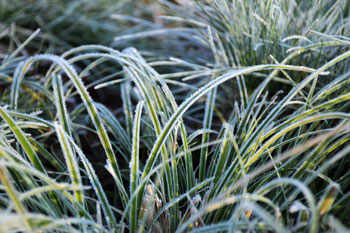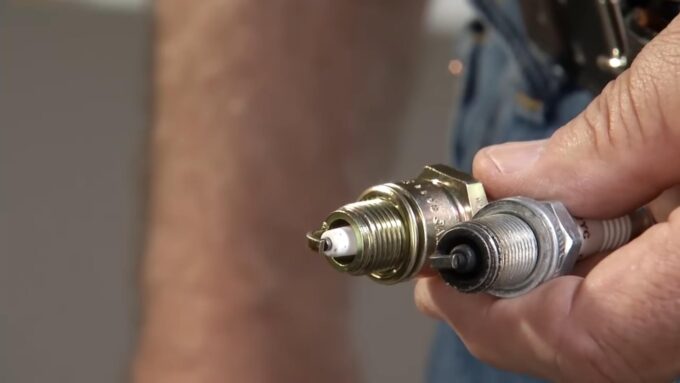Winterizing Your Lawn and Equipment
Winter can be harsh on more than just people. It can also be harsh on your lawn and your equipment. As Texas starts getting into the swing of winter, it’s time to get that lawn prepped for cold weather and your mower and most other power equipment put away for the season.
Whether it’s cold temperatures or actual snow and sleet, your lawn and equipment need to be protected. Prepping your lawn for winter will help keep the grass healthy so you don’t need to spend time repairing the lawn in the spring. Winterizing your equipment will help ensure it has a long lifespan of functioning well. Lawn equipment, especially lawnmowers, is a big investment. If not taken care of, they might not start back up when spring rolls around.
Here are our top tips that will help you give your lawn and tools the protection they need. These tips are Texas-specific, but most can apply to other areas as well.

Prepping Your Lawn for Winter
Remove debris
Take time to gather up those fall leaves with a rake, leaf blower, or shredder/vac. A thick layer can actually smother your lawn, locking out light and air. This can lead to dead patches of grass in the spring and/or disease and fungus issues.
Mow one last time
As the weather cools down, the warm-season grasses most commonly grown in Texas start slowing their growth and going dormant. Mow them one more time in late fall before putting the mower away. As a general rule, cut warm-season grasses to a height of one inch. If you have cool-season grasses like Texas Bluegrass, cut to a height of two inches. Cutting higher is recommended during the summer, when it helps improve drought resistance, but stick to the shorter end of the recommended mowing range now. Anything higher can trap unhealthy moisture over the winter.
Aerate
This tip only applies if you’re growing cool-season grass in your lawn. Your lawn can become impacted during the busy warm months, so to help it breathe you should aerate cool-season grass like bluegrass in the late fall. For warm-season grass like zoysia and Bermuda grass, wait until late spring to aerate. When aerating, you can either rent an aerating tool or hire a lawn maintenance service to do it for you.
Seed bare patches
Again, this tip applies only if you’re planting cool-season grass. If you do it early enough, your lawn should fill in nicely before the ground freezes. To help improve germination, aerate before seeding.
Add fertilizer
A sleeping lawn still needs to eat, so don’t forget the fertilizer. Look for sustained-release products, which will ensure your lawn gets nitrogen, potassium, phosphorous, and partially blended sulfate. As an alternative to commercially available chemical fertilizers, you can apply compost to the lawn in the fall. Compost is a green, organic fertilizer option that also helps improve the soil.
Water
Before the cold sets in, be sure to give your lawn one last drink. This will help activate the fertilizer or work the compost into the soil. You probably won’t have to water again during the winter.
Winterize Sprinklers
Shut off your sprinkler system and then drain sprinkler lines. Excess water can lead to frozen, and even broken, water pipes. If you need to water during a dry winter, resort to the hose. When draining, make sure you follow the instructions for your system; some drain manually, some automatically, and some use an air compressor.
Weeds
Sometimes weeds have a way of popping up even when your grass is dormant. Grab weeds when you see them or spot-treat with an herbicide as needed. To help prevent annual weeks from taking over during the winter, you can apply a pre-emergent herbicide before temperatures at night start dropping below 60°F.
[imagenumber: 178007663]
Taking Care of Your Lawn Equipment
Drain the oil
Oil that sits in an engine gets sludgy, making it hard for the engine to run efficiently. Lawnmowers, as well as other tools with 4-cycle engines, need to have the oil drained. Drop the old oil off at your town’s hazardous waste facility or seek out a recycling center.
Drain or stabilize the gas
If fuel containing ethanol sits untreated, it will degrade. For smaller tools like trimmers, you can drain the gas completely. For larger equipment like your mower, however, it’s better to fill the tank with stabilized fuel. To do this, add a fuel stabilizer to fresh gasoline and use that to fill the gas tank. This will keep gas fresh for about 6 months.
Replace worn parts
Parts that are cracked and brittle can leave equipment vulnerable to absorbing dust or moisture. Check for missing screws and nuts before storing. As part of this, make sure the gas cap has an intact O-ring. Here at Richardson Saw, we have an extensive parts inventory for all the brands we sell and can usually order things we don’t have in stock. You can also look at your local hardware store or contact the manufacturer for replacements.
Change out fuel and air filters
Dirty filters make a tool’s engine work much harder than it should have to. Air filters that are torn should be replaced. If you still have one that’s intact, be sure to remove trapped debris regularly to extend its life. The fuel filter can be found at the end of the fuel line. In most cases, a hangar can help you fish it out and you can simply pull the filter off and install a new one. If it’s hard to get to or you don’t want to mess with it, just bring the tool into our service department for a tune-up.
 Clean the spark plugs
Clean the spark plugs
Spark plugs ignite the air-fuel mixture that starts the engine. They get dirty with repeated use but they are relatively easy to clean. Remove them with a socket wrench, spray them with brake cleaner and scrape off the carbonized black bits with a wire brush. Plugs that are too difficult to clean can be replaced at a minimal cost (usually under $5 apiece).
Get rid of dirt and rust on mower blades
Remember, safety first. Disconnect the spark plug before removing the blade. Use a brush and water if needed, to scrape off dirt. A wire brush will also work when scraping off rust. Before replacing the blade, spray it with rust-inhibiting enamel.
Lubricate
Hinges and moving parts need to be sprayed with lubricant, otherwise they can rust into place. After lubricating, wipe tung oil on any wooden handles to prevent drying and cracking.
Looking for New Equipment or Help with Maintenance?
If you need some new equipment to help get your lawn ready for winter, come see us at Richardson Saw & Lawnmower. Winter is also a good time to bring tools that require maintenance or repair into our service department. We’re usually less busy during the winter than we’d be during the spring and summer, so there’s less of a wait time for you in getting your equipment back. Check out our website or contact us for more details.


